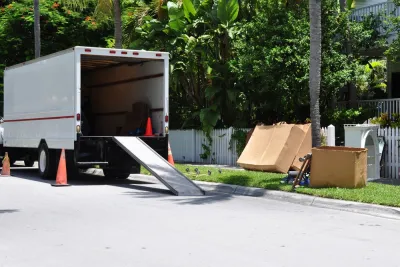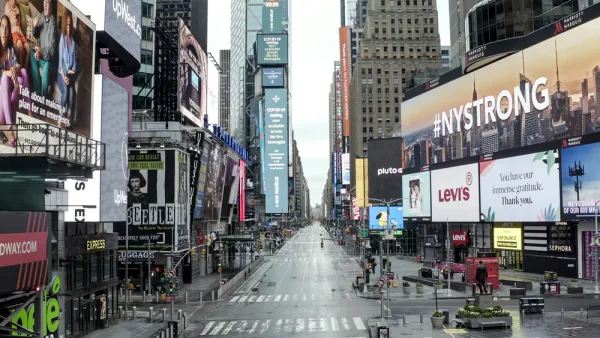New numbers from the Census Bureau show that fewer Americans moved in 2020 than ever before, belying dire predictions about the death of cities and the hollowing out of urban neighborhoods.

Despite the hype over a perceived 'urban exodus' due to COVID-19, Americans actually moved less in 2020, according to the Pew Research Center and data from the U.S. Census Bureau’s Current Population Survey. Richard Fry and D'Vera Cohn report that with only 8 percent of Americans making a move between March 2020 and March 2021, this is the lowest rate since the government started keeping records in 1948.
According to the article, "More people moved out of U.S. cities than moved into them," and "more people moved out of rural areas than moved into them in 2020." The only cities that experienced increased out-migration from previous years were New York and San Francisco. And while "suburbs had more people moving in from other U.S. communities than out," fewer Americans moved into suburban areas in 2020 than in prior years. The survey also indicates that people between 18 and 29 were most likely to move and that many pandemic moves were temporary.
The authors note that these numbers only reflect domestic migration and do not account for people moving in from abroad, or births and deaths. But the data runs counter to the popular narrative that Americans fled cities for lower-density communities in larger numbers during the pandemic.
FULL STORY: In 2020, fewer Americans moved, exodus from cities slowed

National Parks Layoffs Will Cause Communities to Lose Billions
Thousands of essential park workers were laid off this week, just before the busy spring break season.

Retro-silient?: America’s First “Eco-burb,” The Woodlands Turns 50
A master-planned community north of Houston offers lessons on green infrastructure and resilient design, but falls short of its founder’s lofty affordability and walkability goals.

Delivering for America Plan Will Downgrade Mail Service in at Least 49.5 Percent of Zip Codes
Republican and Democrat lawmakers criticize the plan for its disproportionate negative impact on rural communities.

Test News Post 1
This is a summary

Test News Headline 46
Test for the image on the front page.

Balancing Bombs and Butterflies: How the National Guard Protects a Rare Species
The National Guard at Fort Indiantown Gap uses GIS technology and land management strategies to balance military training with conservation efforts, ensuring the survival of the rare eastern regal fritillary butterfly.
Urban Design for Planners 1: Software Tools
This six-course series explores essential urban design concepts using open source software and equips planners with the tools they need to participate fully in the urban design process.
Planning for Universal Design
Learn the tools for implementing Universal Design in planning regulations.
EMC Planning Group, Inc.
Planetizen
Planetizen
Mpact (formerly Rail~Volution)
Great Falls Development Authority, Inc.
HUDs Office of Policy Development and Research
NYU Wagner Graduate School of Public Service




























